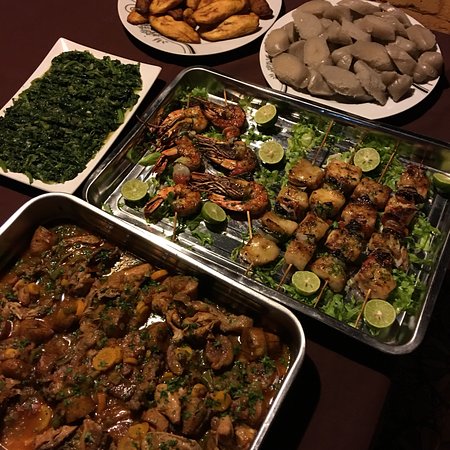Introduction: Street Food in Central African Republic
Street food is an integral part of the culinary landscape in Central African Republic. It is a way of life and a cultural tradition that has been passed down through generations. The country’s street food scene is a melting pot of flavors, textures, and aromas that reflect the diverse cultural influences that have shaped its history.
Market Overview: Central African Republic
Central African Republic has a bustling street food scene that offers a wide variety of dishes that are both delicious and affordable. Most of the street food markets in the country are located in urban areas, with Bangui being the hub of street food culture. The markets are usually open-air spaces that are packed with food stalls selling a vast array of dishes that range from grilled meats to stews, soups, and snacks.
Bangui: A Haven for Street Food Lovers
Bangui, the capital city of Central African Republic, is a mecca for food lovers. The city’s street food scene is vibrant and diverse, with food markets scattered throughout the city. The most popular street food market in Bangui is the Marché Central, which is a bustling hub of activity that comes alive at night. Here, visitors can sample a variety of local delicacies, including grilled meat skewers, cassava leaf stew, and fried plantains.
Street Food in Other Central African Cities
While Bangui is the epicenter of street food culture in Central African Republic, other cities in the country also have their own unique street food scenes. In Bambari, for example, there is a bustling market selling honeycomb and roasted termites, while in Bria, visitors can try grilled crocodile meat and smoked fish.
Gourmet Delicacies in CAR’s Street Food Scene
Central African Republic’s street food scene offers more than just cheap eats. There are also gourmet delicacies that are worth trying. One such dish is the Mbongo Tchobi, which is a slow-cooked beef stew that is flavored with spices and herbs and served with cassava or plantains. Another delicacy is the Kanda, which is a dish made from dried fish that is cooked with vegetables, spices, and palm oil.
Health and Safety Concerns
While street food is a beloved part of Central African Republic’s culinary culture, visitors should be aware of the health and safety risks associated with eating street food. Some of the stalls may not meet hygiene standards, and the food may not be cooked properly, which can lead to foodborne illnesses. Visitors should exercise caution when choosing where to eat and ensure that the food is cooked thoroughly.
Cultural Significance of Street Food in CAR
Street food is an important part of Central African Republic’s cultural heritage. It is a way for people to connect with their roots and celebrate their traditions. Street food markets are also a vital part of the local economy, providing income for many families.
Conclusion: Discovering Street Food Gems in Central African Republic
Central African Republic’s street food scene is a vibrant and diverse culinary landscape that offers something for everyone. From savory stews to sweet treats, visitors can discover a wide range of flavors that reflect the country’s rich cultural heritage. While there are health and safety concerns associated with eating street food, with caution, visitors can enjoy an authentic culinary experience that is sure to leave a lasting impression.

